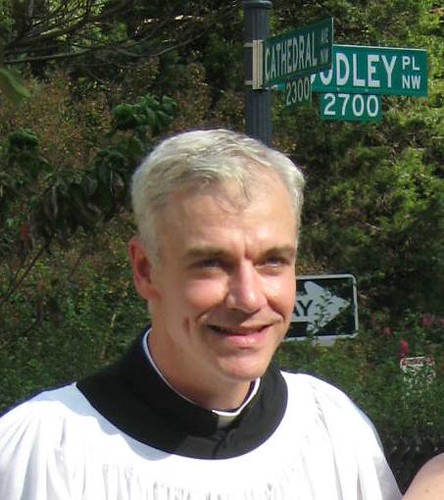Showing Up
A sermon for the First Sunday after Christmas Day, December 26, 2010. The lectionary readings are Isaiah 61:10-62:3, Galatians 3:23-25;4:4-7 , Psalm 147 or 147:13-21, and John 1:1-18 .
I hesitate to talk about another Internet site in a sermon, lest the congregation think I do nothing but surf the Web. Nevertheless, I (like some of you) get more emails than I can read or want, but occasionally one surprises me. This season’s “keeper” has been a wildly creative Youtube video called the Digital Nativity, made by someone (or someones) called EccentricPT.
It basically tells the story of the birth of Jesus as though one is looking at a computer screen. After a click on GoogleEarth shows us a satellite image of Nazareth, we are looking at the Virgin Mary’s Iphone as she gets an instant message from the Angel Gabriel, “Mary, you’re going to give birth to the Son of God.” The story continues as screens are clicked and all of early 21st century technology tells a very old story.
As the telling progresses and Jesus is born, Joseph posts a picture of the baby on Facebook. The number of “likes” rises astronomically. He then creates an event called, “Meet the Baby.” The location is the Stable in Bethlehem. If you’re familiar with Facebook, one can create an event, and then send the invitation out to people, or others can simply stumble into the event’s posting. Then one has a choice to respond either, “I’m attending, maybe, or no.” For the event of “Meet the Baby,” we see the name Joseph, since he created the event. And then we see various guests’ names appear as attending. Melchior, Caspar, and Balthazar. According to scripture the three kings actually do attend, the occasion of which we celebrate on Epiphany, or El Dia de Los Tres Reyes, January 6.
I’ve read that this “attending” feature on Facebook and on other social media presents special problems. Usually, the list of those who are attending, the guestlist, is public information. The problem is that very few people want to say publicly that they’re not attending. Some email invitations give you space to explain, and that’s a good thing, but still, the statistics show again and again that there are events—especially charity events, social events, fundraisers, openings, to which several hundred people will respond “I’m attending,” and yet, only eight or ten people actually show up.
Showing up is the hard part to lots of things. Showing up for work, showing up for some commitment, showing up for appointments. It’s hard when you depend on public transportation, or when your car breaks down, or when you forget to look at the calendar (or, if you’re like me, and on occasion you’ve forgotten to synchronize your hand-held calendar with your office calendar.)
The term, “showing up,” has come to mean a lot more in popular meaning. For a child to grow up in a loving family, the parents need to “show up,” – for soccer games, and school meetings, and arranged times for pick up or dropping off. In relationships of all kinds, the key to being in relationship has to do with “showing up”—not just physically, but also emotionally, psychologically, and spiritually. And we all fail at this. We fail from time to time because we’re human. We fail because we get tired, or cranky, or distracted. We become self-consumed, living life by continually checking the “maybe” column, while refusing to commit to anything that might nudge us out of places that are familiar, comfortable, and private.
In the Christmas story there is a lot of “showing up,” going on. Early, Mary shows up for God, agreeing to be there for God, to be anywhere for God, simply “to be” for God. Then Joseph, who is tempted to run away, or as the scripture puts it (to divorce Mary quietly). But instead, Joseph shows up. The innkeeper shows up by opening his stable. The shepherds show up, as do angels and others, and eventually the three kings. There’s a lot of showing up, but all because of one major, overwhelming, earth-changing appearance.
God shows up. And there’s no “maybe” to it.
In the Incarnation, God comes into the world in a whole new way, physically and bodily, like one of us. He comes into fleshly existence, he is born as Jesus in order to feel like us, to hurt like us, to love like us, to eat and drink and sleep on the earth, even to die like us. But he rises again, and death will never be the same for those who believe.
As we anticipate the unfolding of Christmas and the visits of the Three Kings to meet the baby at the stable, we can think about our own opportunities to “show up.” As we move into a new year, it’s a good time to think about the ways and times that God has shown up in especially strong ways in our lives. It’s a good time to be grateful for all those who have shown up for us when we’ve needed someone most. And it’s an especially good time for us to think about the ways we’ve shown up for others, the ways that perhaps we’ve not always shown up, and to commit to being present in the new year—present for God and for one another.
The Word has become flesh and dwells among us: full, present, and alive.
In the name of God, Father, Son, and Holy Ghost. Amen.








